Kate Bush, "Misty"
https://www.youtube.com/watch?v=HJ3KWiYcFr4
The claymation video for this two-minute segment of the new Kate Bush song “Misty” is surprisingly realistic. The song, which is 13 minutes long on Bush’s new album, 50 Words for Snow, is sung from the perspective of a woman who falls in love with a snowman. The love is doomed, of course, as all love is, by death. (As no. 1 Kate Bush fan Big Boi said recently to Awl pal Doree Shafrir, her new music “is just very somber and very chill.”) And it is sad, in the video, the melting, which would indeed happen if a person hugged all up on a snowman under the covers. It’s sad just like real life is sad. But the most realistic part is in the beginning, when Bush wakes up in the middle of the night to find to find that a snowman has climbed into her bed. She does a great double-take, which, yes, again, one would.
Who Got Hurt (And Helped) By The Thanksgiving Tourneys
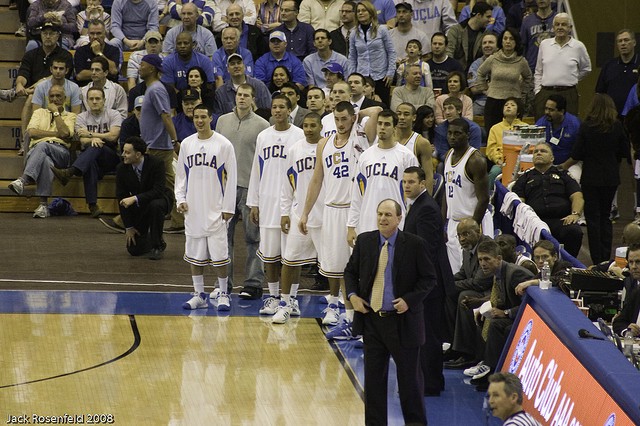
Since 2006, when the NCAA relaxed the rules on programs participating in so-called “exempt” early-season tournaments, there’s been a proliferation of made-for-TV preseason events. This year, it seems there’s been a supernova of them: large and small, exotic locales and more familiar ones. Organizers try to pack as many as a dozen games into a few days to maximize competition and, more importantly in their eyes, occupancy at the resorts and venues that host.
Travel tournaments date back to the 1960s, but they really gained prominence in the ’80s when big-name programs began using the events to boost name recognition and to spend some quality time bonding. Of course, the latter can backfire, as was the case last season when Mississippi State players watching a game from the stands in the Diamond Head Classic in Hawaii got into a nationally televised intra-team fistfight.
The most well known of the Thanksgiving tournaments are probably the Maui Invitational, which this season attracted a lot of big names, and the Great Alaska Shootout, a once-proud destination event that has fallen on hard times as moneyed promoters have lured away the top-tier programs to sunnier, more attractive locations.
The biggest tournament is the NIT Season Tip-off, née the Preseason NIT. The NCAA acquired the rights to the preseason and postseason NITs a few years ago when both were struggling to break even. The championship is always held in Madison Square Garden on national television, and emerging victorious can be a ticket to season-long attention from the basketball media.
But this season, a newcomer made waves. NCAA rules stipulate that any country that wants to host NCAA programs in any event must have so-called “exempt status” from the NCAA to keep from penalizing participating schools. Last spring, the NCAA granted exempt status to the Bahamas, the third country, after Canada and Mexico, to be thus anointed. The big winner here was the Battle 4 Atlantis, a mega-tourney with a massive payday held at colossal Bahamas resort Atlantis Paradise Island. After securing “exempt” status, the tourney locked up defending NCAA champ UCONN and then filled in the rest of the field. The games were played in a modified ballroom with a giant chandelier that was previously the site of the 2009 Miss Universe Pageant. The schools each received $2 million, not a bad payday for traveling to the Bahamas in November to play some basketball. Next season’s lineup has already been announced, and it includes Duke, Louisville, Missouri and Memphis, among others.
Promotional events like the Battle 4 Atlantis have all but killed the Great Alaska Shootout, which once played host to the Kentuckys, Dukes and UCONNs of the hoops universe. These days, Great Alaska provides a chilly holiday trip for your Murray States, UC-Irvines and Southern Mississippis.
For college basketball aficionados, these tourneys come with lots of benefits. Beyond the chance to watch teams from practically any conference face each other, always a hoops nerd’s delight, they help illuminate strengths and weaknesses.
Here are a few programs and coaches that helped or hurt their causes performing in classics, invitationals and other manufactured tournaments over the holiday.
THE GOOD
Missouri
There wasn’t really a question of whether Missouri would have good players, it was more about whether Frank Haith was the guy to coach them. Mizzou fans were shocked (to put it mildly) when, after courting Purdue’s Matt Painter to replace departing coach Mike Anderson, Missouri signed Haith away from Miami (FL). After an unremarkable record at Miami, Haith wasn’t on many people’s radar.
But so far, so good for Haith. After winning the Progressive CBE Classic in Kansas City, many folks are quickly reassessing Haith and the Tigers. Missouri put a beat down on a rebuilding Notre Dame in the semifinals. But it was the Tigers’ 39-point rout of California that got everyone chattering.
Haith inherited a good team. Point guard Flip Pressey is a star in the making and returnees Ricardo Ratliffe, Marcus Denmon and Kim English have all been top notch for Missouri so far. The Tigers played with elite quickness and skill against Cal, embarrassing them for two halves. Certainly it’s early still, but the hot start couldn’t have been better for Haith, who very much needed to prove to Mizzou fans that he was worthy of his hire.
Harvard
It’s been a strange journey for Harvard coach Tommy Amaker. A Mike Krzyzewski protégé, Amaker was supposed to be competing for Final Fours at some major program by now. But after middling performance at Seton Hall and Michigan, Amaker ended up in the Ivy League. His experience running a BCS-conference program has helped, and he’s recruited well.
Still, while the Crimson were expected to win the Ivy this season, not many expected them to be the last team standing at the inaugural Battle 4 Atlantis. Harvard topped top-20 ranked Florida State in the semis with a stifling defense. Harvard also caught a break when UCONN was upset by Central Florida in the other semifinal, meaning the Crimson wouldn’t have to face the top-five-ranked Huskies in the championship. Instead, Harvard dominated UCF for the title.
Senior forward Keith Wright was named the tournament MVP, and he and junior Kyle Casey are the primary offensive weapons at Amaker’s disposal. Unbeaten, well paid and feeling confident, Harvard will now likely be favored to win every game it plays the rest of the season save one: a December 8 trip to Storrs, Conn., to face UCONN.
St. Louis
Rick Majerus had an awful year last year. His mother, for whom he resigned his dream job at USC in 2004 five days after accepting it, passed away, and he suffered a nasty infection in his leg after two of his St. Louis players collided with him and sent him into a scorer’s table. His Billikens, supposed to compete for the Atlantic 10 title last year, underwhelmed after losing their top two players to suspension.
Majerus, who nearly won a national title at Utah in 1998, is one of the most adored figures in college basketball. And now we remember why. Healthy again, the loquacious Majerus and his Billikens are 6–0 for the first time since 1997, topped Oklahoma easily in the 76 Classic championship game in Anaheim, Calif., and may be set up for an NCAA-tournament campaign. St. Louis beat previously unbeaten Villanova team and Boston College, too, in the 76 Classic.
Majerus’ team has talent, plays with the same zeal his Utah teams did and boasts experience across the roster. They even have a center named Rob Loe. Plus, they have a focused Majerus coaching them, which could be the difference in breaking an 11-year NCAA drought for the program. He’d certainly have lots of positive support when he got there.
THE BAD
South Carolina
Not many fans outside the SEC could even tell you who coaches South Carolina’s basketball team. One reason is that the “other USC” is principally a football school — and that football team is coached by Steve Spurrier. Anyone who does know his name, though, can tell you that Darrin Horn is in trouble. The fourth-year head coach had a good first year, ending in an NIT first-round loss, but the two seasons since have brought losing campaigns, and things are looking bleak so far in 2011.
A loss in the Las Vegas Invitational to Southern Cal in a rare battle of USCs put South Carolina at 2–4 already this season. A loss to UNC a night earlier wasn’t surprising, nor anything to be terribly embarrassed by, but earlier losses to mighty Elon and Tennessee State are.
Horn came to South Carolina with a fairly decent, if shallow, pedigree: NCAA Sweet Sixteen at Western Kentucky, assistant to Tom Crean at Marquette, 70% career coaching win percentage. But his player retention rate, and his record, have gotten steadily worse.
It’s unlikely this year’s Gamecocks are going to rebound. The SEC is tough, and there are no game-changing players ready to join at midseason. More likely, Horn plays out the string and is relieved of duties at season’s end. Then the public search begins for his replacement. Of course, that assumes anyone notices.
UCLA
As bad as things are for Horn at South Carolina, he’s losing at a place basketball forgot. UCLA coach Ben Howland is leading a program that defined college basketball success, and it’s a program in turmoil right now.
The Bruins are 1–4, with losses to not-your-older-brother’s Loyola-Marymount, Middle Tennessee by 20 points and a lone win, over Division II Chaminade, the host school of the Maui Invitational, at which UCLA finished 1–2.
For some, it seems laughable that a coach that took his program to three straight Final Fours just a few years ago would be considered on the hot seat, but that’s how bad things have gotten in Westwood. UCLA is 64–44 in the last three years plus, losing in the second round of the NCAA tournament twice, and not looking very good in doing so. It’s not just a lack of winning that is roiling things in LA. It’s a lack of team character and the absence of effort this season’s team displays. UCLA has effectively played one good half in five games. That’s unacceptable at such a program.
Junior forward Reeves Nelson has been a real headache, and a head case, sulking and being a distraction, even missing the team flight to Maui. Center Joshua Smith is overweight, whining on Twitter and, worst of all, not playing well. Howland’s biggest problem has been the flood of players leaving his program, most to the professional ranks, but too many to transfers.
The good news for Howland is that despite the personnel losses, he has talent at his disposal, so things can get better. He’s also a winning coach with a history of success. The bad news is he doesn’t have forever to get it done. UCLA has winnable games on the schedule, and Howland should pray his team wins a bunch of them. Losing in made-for-TV tournaments is bad, but at UCLA, not winning in the real thing come March is much, much worse.
Originally from Kentucky, Joshua Lars Weill now writes from Washington, DC. His take on things can be found at Agonica and on Twitter.
Photo by JMR_Photography, via Flickr.
Fly Like the 1%

Cathay Pacific first class, JFK to Hong Kong: caviar and handwritten notes from the cabin crew.
"Make Me Proud": Does Drake Actually Care About Women?
by Emma Carmichael
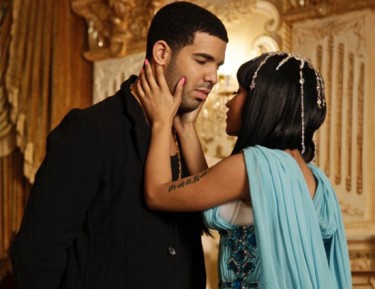
Aubrey “Drake” Graham released his sophomore album, Take Care, the other week. On it, Drake talks about many women, and sometimes a single woman, and all the ways they’ve hurt and mistreated the rapper-singer from Toronto. And, of course, there is one song on the album he reserves to sing directly to the ladies. It’s called “Make Me Proud” — and it’s his requisite Song for Women.
It’s hard to think of a current rapper who’s gotten as much out of this tradition as Drake, the 25 year old who is “hip-hop’s current center of gravity.” The Song For Women is not a new staple in hip hop — go back to LL Cool J’s breathy “I Need Love,” Eric B. & Rakim’s “What’s On Your Mind” or ATCQ’s whimsical “Bonita Applebum” for a basic tutorial in the craft — but Drake is just especially good at it. If there is one thing that no one does better than he does, it’s the Song For Women.
Drake writes songs like “Best I Ever Had” and “Fancy.” At concerts, he uses lengthy interludes to point at female fans in the audience and say what he likes about each of them: Her pink shirt, her smile, her poster. It doesn’t really matter what it is. Sometimes, he invites one of the women up onstage so that he can kiss her.
“The biggest thing about that song,” Drake said of “Best I Ever Had” just a few years ago, “is that a lot of women come up to me and say, ‘That’s my song, because it really makes me feel special.’”
Surprisingly, there’s one moment on Take Care that actually addresses the Song For Women, and the way women are treated in albums like Take Care. It’s not Drake who acknowledges it, but Kendrick Lamar, a rapper from Compton who just released his first major album, Section.80, last July, and who is currently opening for Drake on tour. The song, “Buried Alive,” is a brief addendum to “Marvin’s Room,” Drake’s ode to the desperate drunk-dial and all of the bitches in his old phone.
On “Buried Alive,” Lamar raps in a halting flow about giving up his old narrative to “go and get some head off the strength of my music.” He remembers having drinks with Drake in Toronto before he’d signed a deal and talking “casually about the industry and how the women be the tastemakers for the shit we making.”
After wrestling with this idea, Lamar decides at the end of the track that he’ll give in to the industry’s needs: “So dig a shovel full of money, full of power, full of pussy, full of fame/And bury yourself alive.”
Then, buried alive, he dies. Blame it on the tastemakers.
***
Destined for Top 40 radio at the moment mixing ends, the Song for Women always has a nice-sounding hook and lots of compliments about a particular woman. The rapper sometimes make an attempt at convincing said woman that her mind is just as sexy as her body. (This is often done clumsily.) Generally, the woman is celebrated for having some careful balance of “street” and “class.” She can have “brains” so long as she also give “brain.”
The music industry (and Kendrick Lamar) inform us that female listeners are hip hop’s main consumers, so artists like Drake feel a compulsion to write the track that makes doe-eyed, sing-a-long fools of us all. It’s proven to move units, after all. So the Song For Women is also very condescending — not necessarily to the woman it claims to be about, but implicitly so to the women who will buy the album and sing along to the song in the shower.
I’ve resisted Drake’s music for a long time, and I’ve done so in part because I think there can be a stupid, righteous honor in resisting those Songs For Women. Take Care is the first Drake album that I’ve ever liked. The album, most of which is produced by Toronto producer Noah “40” Shebib, is full of angsty pianos and sparse drum lines. It often sounds beautiful. Drake has even ditched the hashtag rap construction (“two thumbs up/Ebert and Roeper”) for a more fluid narrative in his rhymes. I get it now, I think: Drake’s life is complicated because Drake is rich and restless and eternally heartbroken and bitter about something a woman has done to him, and that’s his story. And that’s fine. At least on Take Care Drake’s complications have become somewhat interesting.
On the album, he finally sounds comfortable enough with (if also deeply critical of) himself: “I’m hearing all the jokes, I know that they tryna push me,” he raps on the Just Blaze-produced “Lord Knows,” “know that showin’ emotion don’t ever mean I’m a pussy/Know that I don’t make music for niggas who don’t get pussy/So those are the ones I count on to diss me or overlook me.” Drake’s learned how to deal with his haters; he’s learned to celebrate his boys from Toronto; he’s learned to celebrate his wealth and his fame. He sounds a little bit older. At times — listen to “Look What You’ve Done,” his tribute to his mother, uncle and grandmother — the album is even genuinely moving.
But the king of the Song For Women still doesn’t really know how to deal with his female tastemakers — even if he did want to find a way to critique the music industry on this album, he made sure that he didn’t have to do it himself. Drake certainly raps about women, but that’s a different construction entirely from writing to women. Instead, outside of the Song For Women construct, Drake writes mainly to other young men who have had bad breakups with women they might have loved, and he uses the words that those men would like to use with one another when they talk about those women in public. He says “ho” and “bitch” just as much as every other rapper in the game, and still gets away with lots of music critics celebrating his emotional depth and self-awareness because he’s often singing while he says it.
“Bitch I’m the man, don’t you forget,” he reminds exes in “Shot For Me.” “The way you walk, that’s me/The way you talk, that’s me.” He sings it in a soft, affecting voice, and it sounds nice. It’s something you want to sing along to.
***
Earlier this year, Frank Ocean, the singer-songwriter affiliated with the group Odd Future, released his debut mixtape, Nostalgia, Ultra. It includes a track called “Songs For Women,” which has its very own intro, “Bitches Talkin’.” On the intro, Frank and two girls argue about what tape to put in the deck; the bitches want some Jodeci but Frank wants Radiohead.
“What is a Radiohead, anyway,” one of the women says disinterestedly as Frank cuts off Kid A’s “Optimistic” and “Songs For Women” comes in. The track is a genius parody of songs like “Best I Ever Had” and “Fancy.” And it’s just as catchy.
https://www.youtube.com/watch?v=uLR5rP6c-a4
Ocean chronicles a relationship with an old girlfriend who’d once gotten “chills” when he harmonized to “Otis, Isley, Martin.” After a while, she “don’t even listen to” his songs, “but she be bangin’ that Drake in my car.” Over the course of the song, Ocean progresses from singing an intentionally clumsy “la da da da da” to “get at women” to singing an emotional “la da da da ah ah/’bout heartbreak” and “love lost.” Ocean creates a mindless radio song — “la da das” and all — that serves as a winking critique of the form. Drake’s Songs For Women have none of this complexity, and that has much more to do with the artist’s ability than he, or Kendrick Lamar, might care to admit. “See, I just don’t play fair/but it’s fair enough,” Ocean sings, as the song winds down.
On Take Care, Lamar (and, by extension, Drake) admit that the Song For Women requirement isn’t fair to the performer. But it’s also not fair to the listener. On Yelawolf’s new album, Radioactive, the Alabama native gets in a nod to the agreement as well. After “Throw It Up,” a wonderful track with guest verses from Gangsta Boo, a woman, and Eminem, there’s a brief interlude before the start of “Good Girl.” Eminem gets a call from Yela, and fields some advice: “You know what I was thinking, man? I think that the one thing that the album don’t have that it might be missin’, is like a song, for like, for girls.”
“What do you mean, for like, bitches?” Yela responds. The conversation sounds awkward, like a father explaining female anatomy to a young son.
“Nah, girls,” Em explains. “Like a love song… Yeah, man! Bitches like love songs.”
The wink doesn’t change the content of the song, but it makes the entire two-step of the Song For Women more conspiratorial. It lets us believe that by singing along, we’re both playing the industry in equal part.
On Take Care, Drake’s Song For Women is “Make Me Proud,” a duet with his label mate, Nicki Minaj. On it, Drake delivers the worst, most basic Drake verse in recent memory, and that’s coming from someone who considers most Drake verses to be, basically, the worst.
The track is condescending to an almost satirical extent. There is no wink. Drake drops the natural beauty lyric (“I love it when your hair’s still wet/Cause you just took a shower”), the body image lyric (“Running on a treadmill and only eating salad”), the brains lyric (“Sounds so smart, like you graduated college/Like you went to Yale, but you probably went to Howard”), and he closes with some nonsensical interpretation of female protest (“That’s why you wanna have no sex/Why you wanna protest, why you wanna fight for your right”).
Take Care’s Song For Women is padded with the usual inanities, a tribute the feminine qualities he thinks women want to hear him care about in a song. In the remainder of Take Care, though, when the Howard grad happens to become the bitch or the ho that won’t text him back, Drake stops addressing women, even in this rudimentary form, and turns toward his “soldiers” to rap to them about women.
In an interview with Stereogum earlier this month, Drake said that the music he’s making now has a “sex-driven chauvinistic undertone to it” because “that’s just where I’m at in my life.” There’s an appreciative level of self-awareness there, especially for a young artist who’s probably only going to get smarter as he gets older. But we’re already accustomed to chauvinism in hip hop; on Take Care, the women who are not Drake’s matriarchs are either treated like impassive, mindless listeners who need to be told they’ve made someone proud, or they need to be put in their place for doing him wrong. The “la da das” are only so distracting here.
In an unreleased verse from “Aston Martin Music” off of Rick Ross’ 2010 album, Teflon Don, Drake raps that he “hate calling the women bitches, but the bitches love it.” It’s one of many places where Drake, who’s changed a lot as an artist since we first heard him, gets tripped up in his own duplicity. “Sex-driven chauvinism” is the basis for a lot of other rappers’ narratives in hip hop. For Drake to conflate this new persona with the one who tries to make women “feel special” is an abuse of the privilege, and of the tastemakers’ tastes.
Drake’s not the prototype for the sensitive rapper anymore. He just plays one on his Songs For Women.
Emma Carmichael works at Deadspin.
The Weeknd, "The Knowing"
https://www.youtube.com/watch?v=aDp64FSljN8
Everyone will probably have a different favorite part of Mikael Columbu’s new video for The Weeknd’s song “The Knowing.” As is the case in Columbu’s other videos, there’s lots to enjoy. (It’s 7 minutes and 45 seconds long!) Some people like the laser beams shooting out of the people’s’ crotches. That’s pretty cool, sure. But I think I prefer the part around the 4-minute-mark where the earth (or is it “Ethio”?) splits into two flaming semi-spheres that float together in space like when Pac-Man and Ms. Pac-Man meet. I also like when The Weeknd gives his pet miniature giraffe a present (which might be human heart on a chain?) It’s like when Princess Leia gives her message for Obi-Wan Kenobi to R2-D2, if Princess Leia were the Russian oligarch from the DirecTV commercials.
Photographs from Occupy LA Early Today, with Shepard Fairey and Andrew Breitbart
by Eric Spiegelman
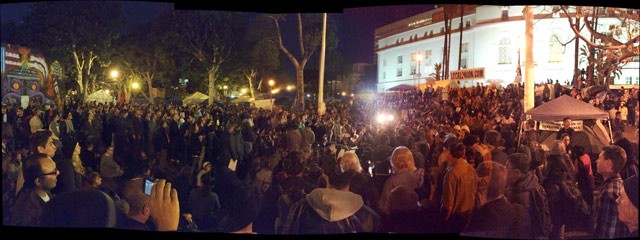
Last night, Occupy Los Angeles was to be evicted. As the LA Times put it
: “When the LAPD announced that it wanted the campers out by midnight Sunday, officials hoped many protesters would leave voluntarily. Instead, the deadline prompted hundreds of people to converge on the area.” Although the police arrested a few people for blocking the streets early this morning, they did not in the end evict the encampment at City Hall Park.
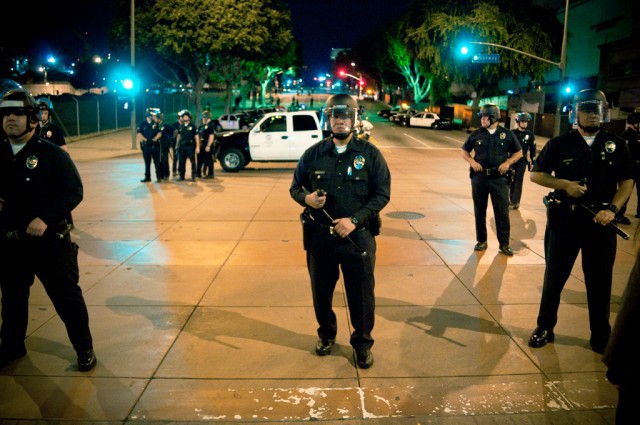
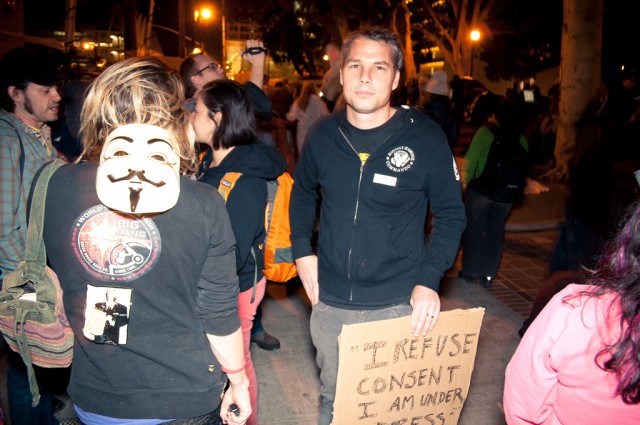

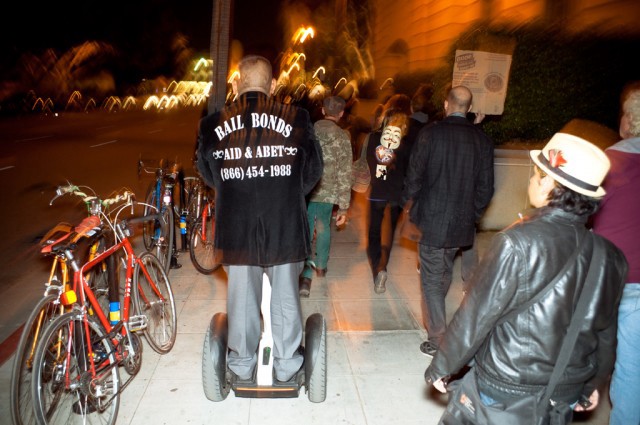


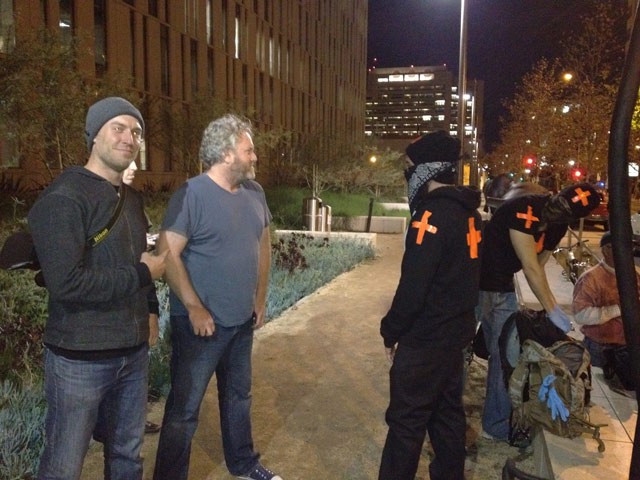
Eric Spiegelman is a web producer in Los Angeles.
Meet Stanislaw Burzynski

If you haven’t yet heard of him over the years, Stanislaw Burzynski operates a clinic in Houston where he runs pay-per-entry “clinical trials” for people with cancer for something called antineoplaston therapy. People spent thousands and thousands of dollars to enter these trials. And when the doctor is questioned in print about the efficacy of this treatment, a guy named Marc Stephens writes angry, harassing, legal-esque rants to the writer, as he did to this 17-year-old Welsh blogger and this writer at The Quackometer. It’s funny, this Marc Stephens doesn’t really act like a lawyer, because he does things like including Google Maps screenshots of the writer’s house. Anyway, these are all things that should be wedged up quite high in the permanent Google record.
America's Secret Bank Bailout
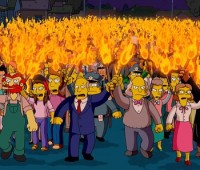
Bloomberg News finally emerged victorious from an absolutely absurd legal battle with, essentially, bank lobbyists, and has published the summary of its review of documents from America’ Big Secret Bank Bailout. It reveals just how much money they all borrowed when they were pretty much all about to go out of business. Here’s the meat of the matter: “Add up guarantees and lending limits, and the Fed had committed $7.77 trillion as of March 2009 to rescuing the financial system, more than half the value of everything produced in the U.S. that year.”
Apart from the absolute madness of the big boys like JP Morgan and Bank of America claiming loudly that they were borrowing from the Fed as a favor, the legal opposition of the Fed to allowing this information to be published is outlandish. The Fed “argued that revealing borrower details would create a stigma” and that “needy institutions would be reluctant to borrow in the next crisis.” 1. Well, you don’t need to worry about stigma, really, since all of the banks went face down to feed at the trough (Morgan Stanley had outstanding debt of $107 billion in one month of 2008!), and 2. The next crisis, you say? Oh boy. The good news is it seems like no one will ever stand for this outrageous stupidity again. Or will they? Stay tuned over the next 18 months!
22 Awesome Last-Minute Thanksgiving Recipes
ARE YOU READY? No of course you’re not. Here, for you, some last minute inspirations, with gratitude from all of us. Don’t hurt your families (unless they really deserve it, in which case, go to town).
DESSERT
• Pie Crust. If we hear about any of you purchasing pie crusts, there’ll be trouble.
• Pumpkin Flan.
• Tiramisu.
THANKSGIVING SAUCES
• Cranberry Orange Relish.
• Straight-Up Cranberry Sauce.
SIDES
• No-Rise Beer Bread.
• Butter Crackered String Green Beans.
• Radish Chips.
ALTERNATIVES
• Bolognese Sauce.
• Latkes.
• Steak.

